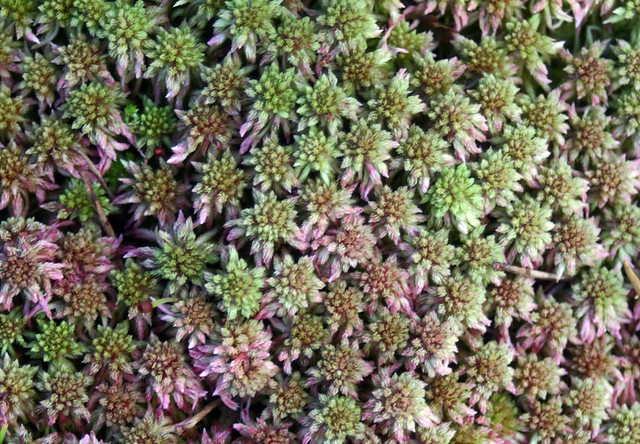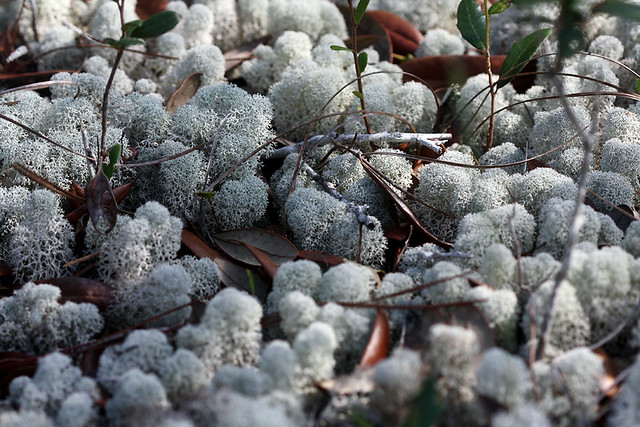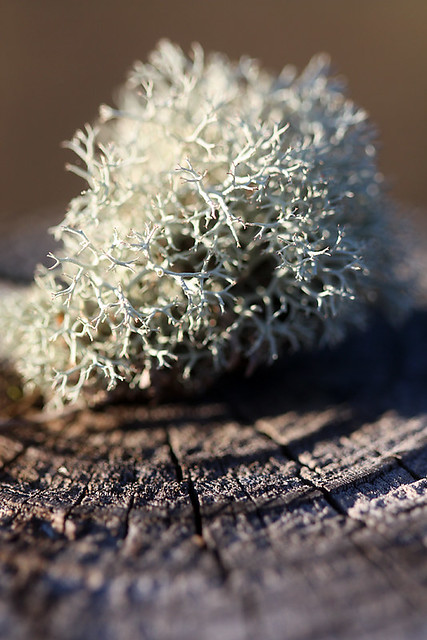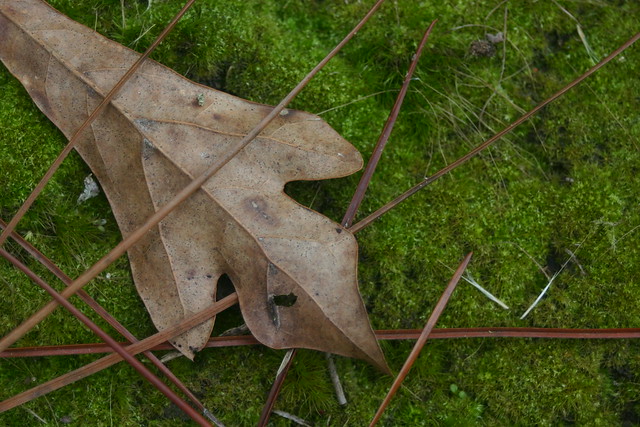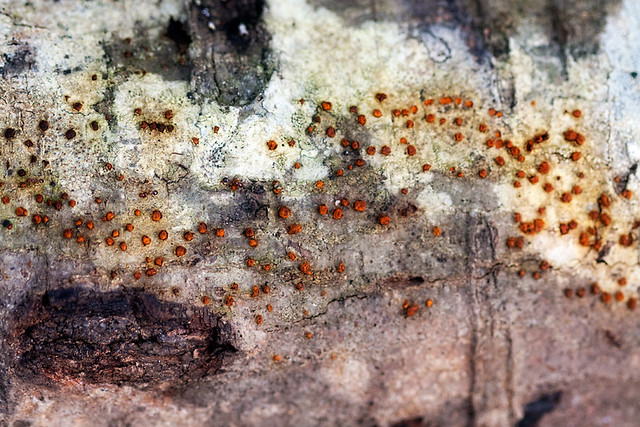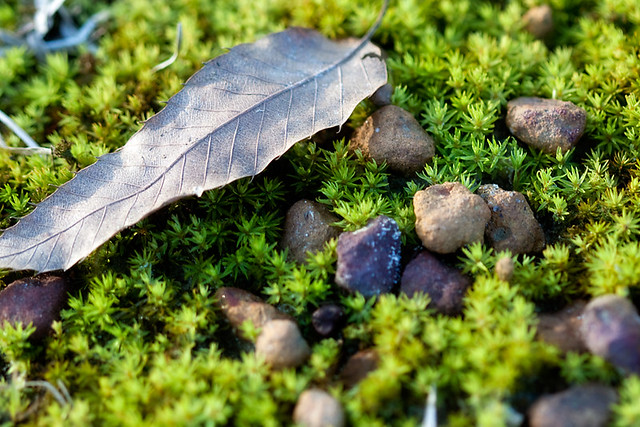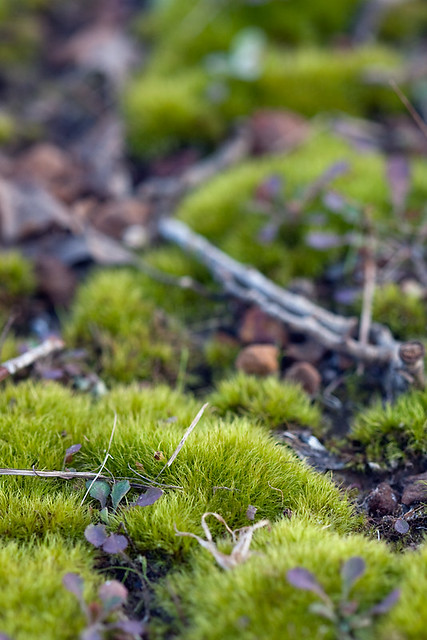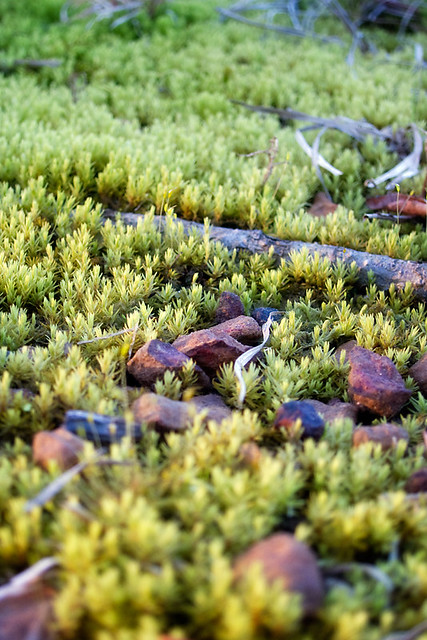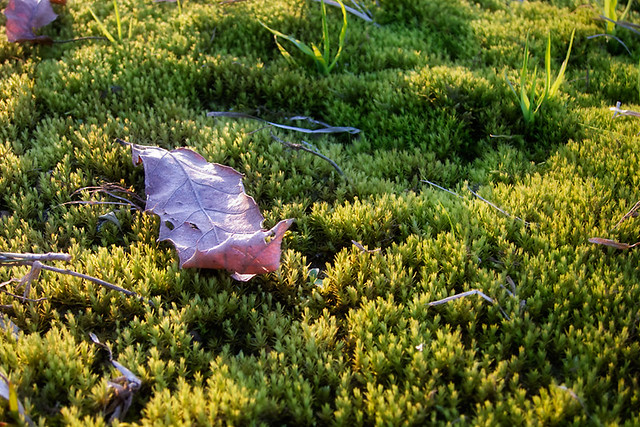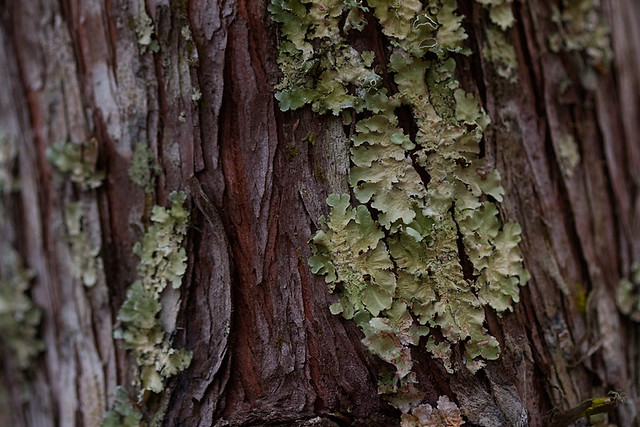The two rose of sharon trees/tall shrubs have been flowering for a week or so.
This one's all white...
...and looks very Hawaiian to me, for some reason, against the blue sky...
...and the other is light purple with a red eye. (I think it is, at least, though you can't see the eye in this photo, due to the angle and the partially closed flowers.)
The even taller shrub-tree in the back is some variety of loropetalum (Chinese fringe flower). I wish I knew what kind it was, just for curiosity's sake. We got another tiny loropetalum recently, on clearance ($1.72). It's 'Ruby', which is supposed to be a dwarf form, so it shouldn't be the same as the one we already have (unless the mature size estimates for 'Ruby' are completely wrong).
One of the black-eyed Susan vines (Thunbergia) are blooming. It's still a little thing, but at least it's trying. The other one is in a hanging basket. I've read that clock vine (another common name) is good in hanging baskets, but so far, it's trying to climb up. It's reached the top of the hanger, and there's not much else to climb, where it is, so I'll be interested to see what it does next.
Aloe and some marble and wire decorative plant stakes:
Here's the bit of bleeding heart that has successfully rooted. If I had any faith of its return next spring, I'd be tempted to try rooting more of it. This piece was certainly easy!
Isn't it satisfying when a cutting roots? Especially when (as with this one) it wasn't an intentional cutting. Taking a pruning or accidental damage and making a new plant out of it is nothing short of a thrill. I'm seeing promising results (fingers crossed) with a piece that broke off of my new red Mexican ruellia (Ruellia elegans) and one or two other broken pieces of plants tucked into pots.
Unfortunately, the cuttings I took from the climbing/rambling pink rose (the one that may or may not be 'Lavender Lassie') are not looking good. Oh well. I can try again, I guess... In the meantime, I'll leave them where they are. You never know what might happen.
Daylily:
Double Red KnockOut rose:
Sunday, May 31, 2015
Saturday, May 30, 2015
...Now with Even MORE Moss!
I still had moss-on-the-brain after writing the last blog post, so I decided to look back through my Flickr photostream at some of the particularly mossy/licheny photos I've taken in the past.
(If you're determined to see this thing through to the end, you might want to gather provisions-- or at least a beverage-- before you begin. Calling this post "photo-heavy" may not go far enough.)
We start with photos from a couple of trips to Sweden. (That's where my husband's from, and his family all live there.)
Then there's this one (reindeer moss) from a walking/biking trail near the beach here in Alabama:
And I think the rest of these are all from either our yard or down nearer to Grandpa L.'s pond:
Whew. That should be enough moss/lichen photos for a while, huh?
(If you're determined to see this thing through to the end, you might want to gather provisions-- or at least a beverage-- before you begin. Calling this post "photo-heavy" may not go far enough.)
We start with photos from a couple of trips to Sweden. (That's where my husband's from, and his family all live there.)
Then there's this one (reindeer moss) from a walking/biking trail near the beach here in Alabama:
And I think the rest of these are all from either our yard or down nearer to Grandpa L.'s pond:
Whew. That should be enough moss/lichen photos for a while, huh?
Labels:
non-flowers
~* M O S S *~
I think I've always loved moss. In my mind, it's closely associated with mountain streams and boulders-- cool, damp, shaded places-- but also old stone and brickwork. We don't have huge boulders, around here (not naturally, at least). No mountain streams, either. However, we can still find interesting mosses and lichens.
There are a few different mossy/licheny colonies around our yard.
Along the eastern fence-line, there's some type of lichen with just a tiny bit of moss growing in between-- and just outside the fence (and away from the lawnmower's reach) the occasional bit of reindeer moss (which is actually not a moss at all). A mix of mosses and lichens-- and a little more reindeer moss-- grow along parts of the southern boundary of the fenced yard.
Around the river birches and crepe myrtles in the southwestern corner (shaded by tall pine trees), there's a lot of moss growing. Not surprising, considering that it's a mostly shady spot with soil that, to put it kindly, retains moisture well.
(Please pardon the blurriness of some of these photos. I was under attack by mosquitoes! So much so that I cut the moss photo expedition short. Maybe I'll continue it some other day.)
Then there's the more finely textured moss growing on the front edge of the step up to the kitchen door-- a little moss here and there on pots and pavers-- and the cushions of moss dotting some of the paths through the woods.
I don't know much about moss or lichen identification, but fortunately, you don't have to be an expert to appreciate natural beauty.
Last week, I collected a little moss (and lichen) from here and there, and put them in small pots that I'm unlikely to use for anything else (mainly because they're just so small). I've put them in shady parts of the covered patio, where I should remember to keep them watered (since I'll already be watering so many other potted plants).
I can't guarantee they'll last for long, but they were free ;o) and it was fun potting them up!
One of these days, I'm going to make some more hypertufa troughs/planters, and when I do (and when they're cured and in place), I may remember to try a moss smoothie on some of them. The only thing better than a faux stone planter is a faux stone planter with a generous coating of velvety moss!
There are a few different mossy/licheny colonies around our yard.
Along the eastern fence-line, there's some type of lichen with just a tiny bit of moss growing in between-- and just outside the fence (and away from the lawnmower's reach) the occasional bit of reindeer moss (which is actually not a moss at all). A mix of mosses and lichens-- and a little more reindeer moss-- grow along parts of the southern boundary of the fenced yard.
Around the river birches and crepe myrtles in the southwestern corner (shaded by tall pine trees), there's a lot of moss growing. Not surprising, considering that it's a mostly shady spot with soil that, to put it kindly, retains moisture well.
(Please pardon the blurriness of some of these photos. I was under attack by mosquitoes! So much so that I cut the moss photo expedition short. Maybe I'll continue it some other day.)
Then there's the more finely textured moss growing on the front edge of the step up to the kitchen door-- a little moss here and there on pots and pavers-- and the cushions of moss dotting some of the paths through the woods.
I don't know much about moss or lichen identification, but fortunately, you don't have to be an expert to appreciate natural beauty.
Last week, I collected a little moss (and lichen) from here and there, and put them in small pots that I'm unlikely to use for anything else (mainly because they're just so small). I've put them in shady parts of the covered patio, where I should remember to keep them watered (since I'll already be watering so many other potted plants).
I can't guarantee they'll last for long, but they were free ;o) and it was fun potting them up!
One of these days, I'm going to make some more hypertufa troughs/planters, and when I do (and when they're cured and in place), I may remember to try a moss smoothie on some of them. The only thing better than a faux stone planter is a faux stone planter with a generous coating of velvety moss!
Labels:
non-flowers
Thursday, May 28, 2015
The Return of the King
The weather has been making up for a couple of dry weeks with rain, the past few days. Of course, that also means that heavy humidity has settled in, too.
I forget the powerful effects of humidity, after a few months away from summer, but it has a way of forcefully reminding you, about this time of year. Humid air magnifies the effort it takes to do anything outdoors-- even just sitting or standing there. Thank goodness for the air conditioning, cool water, and fresh, dry clothes waiting inside!
We're eventually going to cut the yard in two-- into a front yard and a back yard-- so we'll be able to let the dogs out without giving them the run of the entire yard. It will be handy for times when we have company or need to do something outside without canine interference. (Right now, our only options are keeping them inside or walking them on leashes.)
Today, I dug up a crepe myrtle that stands in the way of a section of the projected new fence. It wasn't an easy job, but at least it's done. Because I didn't intend to try to transplant it-- just wanted it dug up and gone-- I used a hand-held tree limb saw to cut through a couple of roots, which reduced the task's difficulty significantly.
I left some of the chopped-off roots in the ground, and now I'm wondering if they're likely to send up new shoots. Maybe I'll go out there and dig up the roots tomorrow, while the soil is still loosened, with no new plantings to disturb. (*sigh* Wish I had taken the time to do it this morning...)
Another plant in that same area of the yard is a sago palm. It's probably my second-best sago palm, but I just didn't want it in that spot. It's prime real estate-- a slightly shadier spot near the house. I want to fill that area with plants that I love that need some shade, not sago palms, which can grow in sun.
Why don't I love sago palms? Well, they're ok. They're interesting plants-- especially if you like a tropical vibe in your garden. But they're prickly, they're prone to damage from cold winters, and they make too many pups (baby sago palms that grow tightly clustered around the parent plant).
If you leave the pups, they eventually grow up to form a sago cluster of monstrous proportions. For some, a sago jungle might be fine. It's not my style, though, so I remove them. For some gardeners, pup removal seems to be relatively easy-- just pop 'em off!-- but for me, it's always been time-consuming and exhausting. I don't want to further complicate the task by having to maneuver around the shade-loving plants that will eventually be growing there.
Anyway, now that I've aired my sago palm grievances... ;o)
I dug it up and planted it down near the other most successful sago palm-- at the northern side of the front yard, beside an ash tree. After settling it into place, I went to fetch a bucket of mulch-dirt to spread around it, and when I came back, there was a king snake (probably the same one I saw earlier in the season) snuggled up right beside that selfsame sago palm! He moseyed a little further on his way, so I was able to finish up with the planting/watering. I'm glad to see that he's still in the area, but maybe next time he could wait until I've completely finished planting something before conducting his inspection.
I forget the powerful effects of humidity, after a few months away from summer, but it has a way of forcefully reminding you, about this time of year. Humid air magnifies the effort it takes to do anything outdoors-- even just sitting or standing there. Thank goodness for the air conditioning, cool water, and fresh, dry clothes waiting inside!
- - - - - - -
We're eventually going to cut the yard in two-- into a front yard and a back yard-- so we'll be able to let the dogs out without giving them the run of the entire yard. It will be handy for times when we have company or need to do something outside without canine interference. (Right now, our only options are keeping them inside or walking them on leashes.)
Today, I dug up a crepe myrtle that stands in the way of a section of the projected new fence. It wasn't an easy job, but at least it's done. Because I didn't intend to try to transplant it-- just wanted it dug up and gone-- I used a hand-held tree limb saw to cut through a couple of roots, which reduced the task's difficulty significantly.
I left some of the chopped-off roots in the ground, and now I'm wondering if they're likely to send up new shoots. Maybe I'll go out there and dig up the roots tomorrow, while the soil is still loosened, with no new plantings to disturb. (*sigh* Wish I had taken the time to do it this morning...)
- - - - - - -
Another plant in that same area of the yard is a sago palm. It's probably my second-best sago palm, but I just didn't want it in that spot. It's prime real estate-- a slightly shadier spot near the house. I want to fill that area with plants that I love that need some shade, not sago palms, which can grow in sun.
Why don't I love sago palms? Well, they're ok. They're interesting plants-- especially if you like a tropical vibe in your garden. But they're prickly, they're prone to damage from cold winters, and they make too many pups (baby sago palms that grow tightly clustered around the parent plant).
If you leave the pups, they eventually grow up to form a sago cluster of monstrous proportions. For some, a sago jungle might be fine. It's not my style, though, so I remove them. For some gardeners, pup removal seems to be relatively easy-- just pop 'em off!-- but for me, it's always been time-consuming and exhausting. I don't want to further complicate the task by having to maneuver around the shade-loving plants that will eventually be growing there.
Anyway, now that I've aired my sago palm grievances... ;o)
I dug it up and planted it down near the other most successful sago palm-- at the northern side of the front yard, beside an ash tree. After settling it into place, I went to fetch a bucket of mulch-dirt to spread around it, and when I came back, there was a king snake (probably the same one I saw earlier in the season) snuggled up right beside that selfsame sago palm! He moseyed a little further on his way, so I was able to finish up with the planting/watering. I'm glad to see that he's still in the area, but maybe next time he could wait until I've completely finished planting something before conducting his inspection.
Labels:
flowers,
wildlife,
yard improvements
Tuesday, May 26, 2015
Crookneck Squash
I've eaten a few of our squash-- very lightly pan-fried, I guess you'd call it. (They were fine. Tasted a lot like squash, amazingly enough.) Then we both had some prepared in a new way (for us)-- coated in a mixture of panko breadcrumbs and Parmesan, then baked. (It was alright, but needs more seasoning for my palette. We could try it again, sometime.)
The latest pickings:
I don't recall if we had any of these "conjoined" squash, year before last... From what I've read online, they're not particularly rare for yellow squash, but still not an everyday occurrence, either. One person said he got maybe 2 or 3 out of 100 squash.
I think both of these came from the same plant. Maybe it's predisposed to make "double" squash, for some reason...
People apparently call these "Siamese squash", by the way. (g)
...I think they look vaguely... suggestive. In Victorian times, Siamese squash would be the source of ribald commentary among the men, quickly covered or hidden away from the innocent eyes of children and the delicate sensibilities of ladies. ;o)
The latest pickings:
I don't recall if we had any of these "conjoined" squash, year before last... From what I've read online, they're not particularly rare for yellow squash, but still not an everyday occurrence, either. One person said he got maybe 2 or 3 out of 100 squash.
I think both of these came from the same plant. Maybe it's predisposed to make "double" squash, for some reason...
People apparently call these "Siamese squash", by the way. (g)
...I think they look vaguely... suggestive. In Victorian times, Siamese squash would be the source of ribald commentary among the men, quickly covered or hidden away from the innocent eyes of children and the delicate sensibilities of ladies. ;o)
Labels:
vegetables
Subscribe to:
Comments (Atom)




















